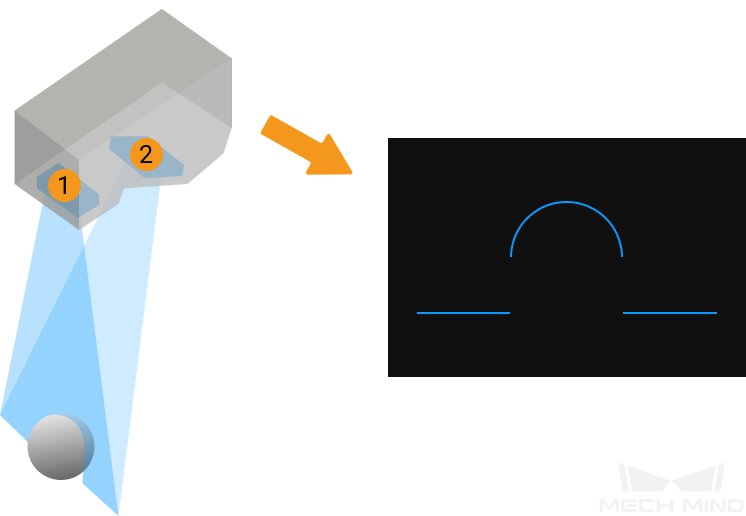Scanning Mechanism of Laser Profiler
The laser profiler uses the laser emitter and receiver unit inside it to conduct the scan of the target object. This topic introduces the basic process of scanning and relevant concepts.
Basic Process of Scanning

-
The laser emitter (1 in the figure above) emits a line of laser light onto the target object within the FOV of the laser profiler.
-
The laser light is reflected by the target object and received by the receiver unit (2 in the figure above). Because the receiver unit is at an angle to the laser emitter, the laser light reflected by the target object’s surfaces at different heights falls on different positions on the receiver unit. The image generated on the receiver unit at this time is the raw image in Mech-Eye Viewer.
-
The laser emitter, receiver unit, and target object form a triangle. According to the principle of triangulation, the laser profiler can calculate the distance from each point on the reflected laser lines to the sensor head using the known angles and distances.
-
Based on the calculation result and other parameter settings, the laser profiler extracts a profile from the raw image. The profile reflects the change in the distance to the sensor head along a section of the target object, that is , the change in height.
-
The target object moves relative to the laser profiler. The laser profiler repeats the above steps to complete multiple scans and obtain a series of profiles of the target object, used to generate the intensity image, depth map, and point cloud.
Relevant Concepts
-
Line scan: the process during which the laser profiler emits the laser light once and generates one profile.
-
One round of data acquisition: the process during which the laser profiler completes multiple line scans, generates multiple profiles, and stitches the profiles to generate the intensity image, depth map, and point cloud.
-
Trigger: the action that makes the laser profiler start a round of data acquisition or a line scan.
There are two methods for triggering one round of data acquisition or one line scan, respectively, suitable for different scenarios. For details, please refer to Methods for Triggering Data Acquisition.